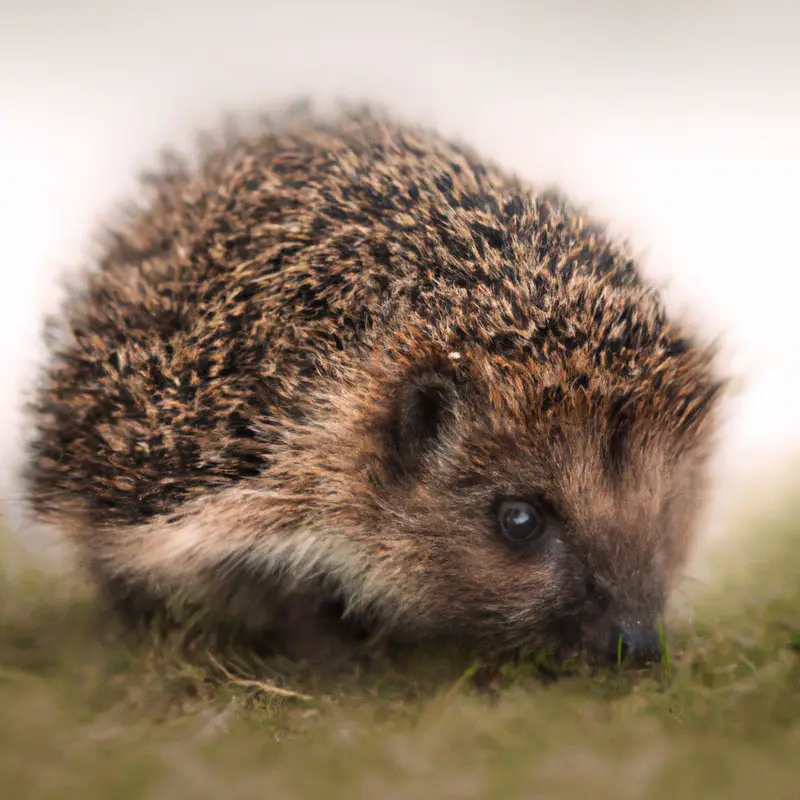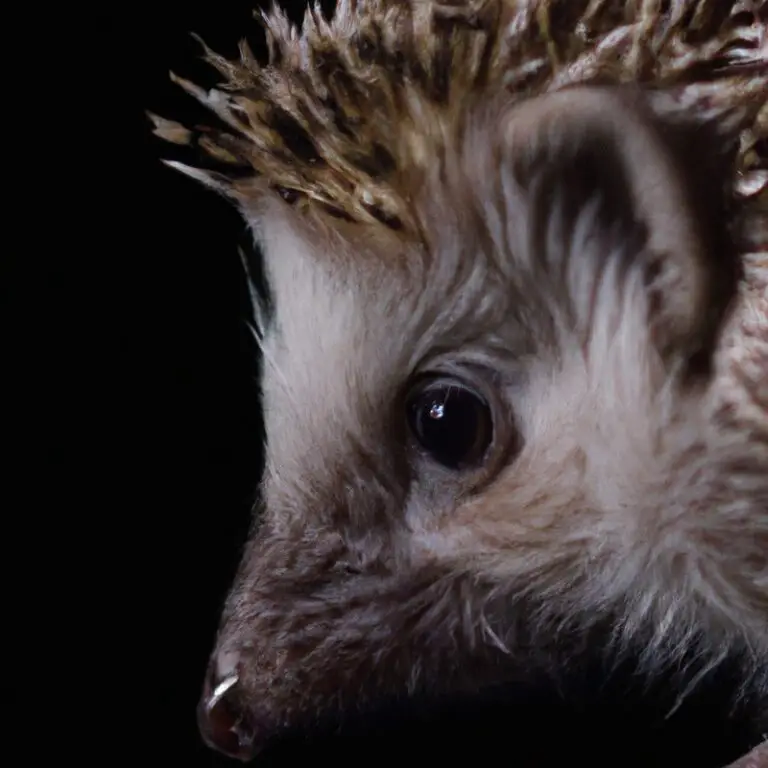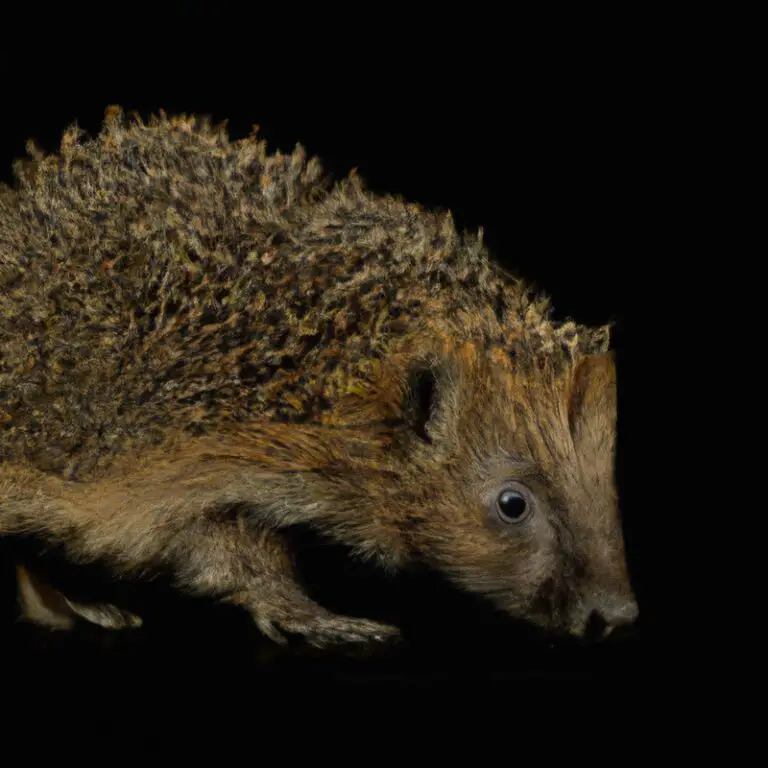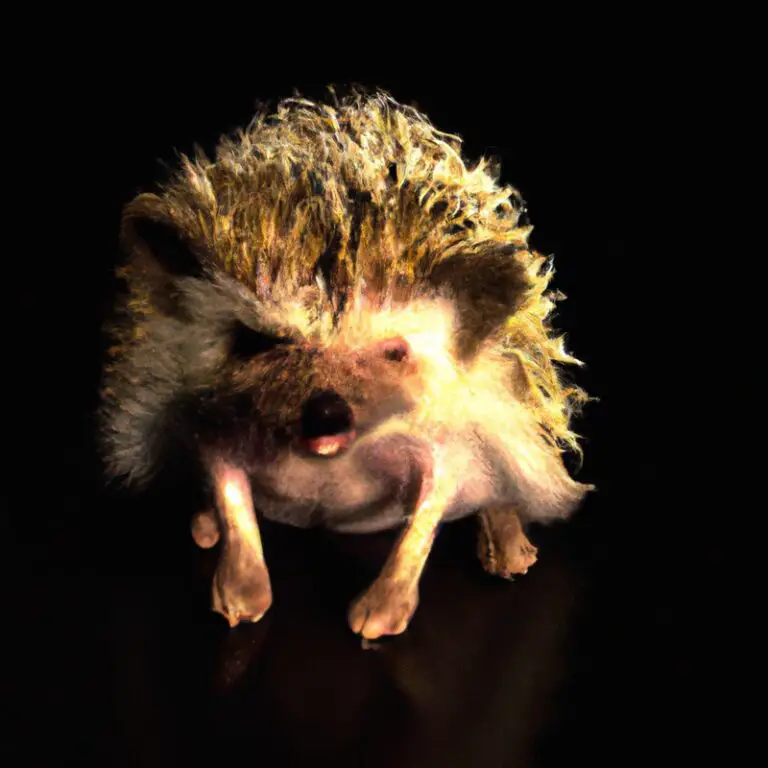What Is The Anatomy Of a Hedgehog?
Key Takeaways:
- Hedgehogs have a spiky coat made up of thousands of quills.
- They have a small, round body with short legs and a snout-like nose.
- Hedgehogs have excellent hearing and sense of smell, but poor eyesight.
- They are nocturnal creatures, primarily active at night.
Did you know that hedgehogs have more than just a cute and spiky appearance?
These fascinating creatures possess a unique anatomy that allows them to adapt and survive in their environments.
From their intricate external features, such as their spines and colorful coats, to their internal systems, including their skeletal and digestive systems, hedgehogs are truly remarkable.
In this article, we will explore the anatomy of a hedgehog, uncovering the secrets behind their physical characteristics, reproductive processes, diet, senses, behavior, and much more.
Get ready to dive into the captivating world of this intriguing creature that has captured our hearts.
| Body Part | Description |
| Spines | The hedgehog’s most distinctive feature, made of stiffened hairs which cover its back and sides. |
| Ears | Sensitive to sounds and located on either side of the hedgehog’s head. |
| Eyes | Small and beady, located on the front of the hedgehog’s face. |
| Nose | Protruding snout used for smelling and detecting prey. |
| Mouth | Contains sharp teeth for biting and chewing. |
| Quills | Short, needle-like spines found on the hedgehog’s underbelly and sides. |
| Feet | Four feet with claws, used for digging and gripping surfaces. |
| Legs | Short legs that allow the hedgehog to move quickly and burrow underground. |
| Tail | Short, stubby tail, usually hidden among the hedgehog’s spines. |
| Belly | Soft and vulnerable, lacking spines for protection. |
The External Anatomy of a Hedgehog
The External Anatomy of a Hedgehog includes its spines, colors, facial features, ears, limbs, and feet.
Spines and Colors
Spines are a defining feature of hedgehogs.
Covered in sharp, pointy quills, spines serve as a protective mechanism.
When a hedgehog feels threatened, it rolls into a tight ball, exposing only its spines.
Hedgehogs come in various colors, including brown, gray, and white.
Some even have patches of different colors on their spines.
The coloration helps them blend into their surroundings and provides camouflage from predators.
It’s fascinating to observe the different spines and colors among hedgehog species.
Facial Features and Ears
Facial Features: Hedgehogs have a unique face with a small, pointy snout and round dark eyes. They also have a cute button nose and a mouth that is used for eating and drinking.
Ears: Hedgehogs have large, rounded ears that sit on the top of their heads.
These ears are covered in fur and help them to hear sounds in their environment. The ears can be moved independently, allowing them to be extra alert to potential threats or prey.

Limbs and Feet
The limbs and feet of a hedgehog are important for their mobility and survival.
Hedgehogs have four limbs, each with five toes and sharp claws.
These limbs are adapted for digging, climbing, and moving through their environment.
The front limbs are stronger and longer than the hind limbs, enabling hedgehogs to dig burrows and defend themselves.
The feet of hedgehogs have specialized pads for traction, which help them navigate different terrains.
Their claws are used for digging and capturing prey.
Thanks to these unique limb and foot adaptations, hedgehogs are able to thrive in various habitats.

The Internal Anatomy of a Hedgehog
The Internal Anatomy of a Hedgehog: Explore the hedgehog’s skeletal, digestive, and respiratory systems.
Skeletal System
The skeletal system of a hedgehog is an essential part of its anatomy.
It provides support, protection, and mobility.
The skeleton consists of bones, which are connected by joints and held together by ligaments.
The spine is made up of individual vertebrae, allowing the hedgehog to move and curl up into a ball for defense.
The ribs protect the internal organs, while the skull protects the brain.
The long bones in the limbs enable the hedgehog to walk and climb.
Overall, the skeletal system plays a crucial role in the hedgehog’s ability to move and survive.
Digestive System
The hedgehog’s digestive system is designed for their omnivorous diet. It consists of a mouth, teeth, esophagus, stomach, intestines, and anus.
When a hedgehog eats, the food is broken down by enzymes in their saliva and stomach acid.
From there, it moves through the intestines where nutrients are absorbed and waste is formed. Hedgehogs have a unique ability to eat and digest a variety of foods, including insects, plants, and even small animals.
This allows them to adapt to different environments and find food sources that are available to them.
Respiratory System
The respiratory system of a hedgehog is responsible for bringing in oxygen and removing carbon dioxide from their body.
It consists of several key components, including the lungs, diaphragm, and trachea.
The lungs are the main organs for respiration, where oxygen is taken in and carbon dioxide is released.
The diaphragm, a large muscle located below the lungs, helps control breathing by contracting and relaxing.
The trachea is the tube that connects the lungs to the throat, allowing air to flow in and out.
This system is vital for a hedgehog’s survival, as it allows them to breathe and obtain the oxygen they need.
Hedgehog Reproduction and Development
Hedgehog Reproduction and Development involves understanding their reproductive organs, mating and gestation, as well as the process of birth and offspring care.
Reproductive Organs
The reproductive organs of a hedgehog are located in the abdominal and pelvic cavities.
The female hedgehog has a pair of ovaries, which produce eggs, and a uterus, where the fertilized egg implants and develops into a baby hedgehog.
The male hedgehog has testes, which produce sperm, and a penis for mating.
Hedgehogs have internal fertilization, meaning that the male transfers sperm directly into the female’s reproductive tract.
Mating and Gestation
Mating in hedgehogs usually takes place between April and September.
The female hedgehog attracts the male with a series of clicks and hisses, and they engage in a short courtship ritual before mating.
Hedgehogs have a relatively short gestation period of about 30-40 days.
The female builds a nest and gives birth to a litter of 3-5 hoglets.
The hoglets are born blind and hairless, but they quickly develop spines within a few days.
The mother takes care of the hoglets until they are ready to venture out on their own.
Birth and Offspring Care
Birth and Offspring Care: The birth process for hedgehogs is relatively quick and effortless. After a gestation period of around 30-40 days, the female gives birth to a litter of 1-7 hoglets.
These hoglets are born with soft spines, closed eyes, and are completely dependent on their mother for survival.
The mother hedgehog provides round-the-clock care, nursing her babies and keeping them warm until they are ready to venture out on their own, usually around 4-6 weeks old. During this time, it’s important to provide the mother with a safe, quiet, and warm environment to support her in caring for her offspring.
Hedgehog Diet and Digestion
Hedgehogs have a specific diet and digestive system.
Teeth and Jaw Structure
Hedgehogs have a unique set of teeth and jaw structure that allows them to eat their preferred diet of insects, worms, and sometimes small vertebrates.
They have sharp incisors at the front of their mouths for tearing food, followed by sharp canines and smaller premolars.
Their molars in the back of their mouths are used for grinding and chewing.
This dental arrangement, along with their muscular jaws, helps them efficiently process their food.
Additionally, hedgehogs have a strong bite force that aids in cracking open hard-shelled prey.
Preferred Foods
Hedgehogs have a varied diet consisting of both plants and animals.
They are omnivores, meaning they can eat both meat and plants.
Some preferred foods for hedgehogs include insects, such as crickets and mealworms, as well as fruits and vegetables like apples, carrots, and leafy greens.
It’s important to offer a balanced diet to ensure they receive all the necessary nutrients.
Remember to avoid feeding them foods that are toxic to hedgehogs, such as chocolate, grapes, and onions.
Digestive Physiology
Digestive physiology refers to the processes by which a hedgehog’s body digests and absorbs nutrients from its food.
Hedgehogs have a relatively simple digestive system compared to other animals.
Food enters through the mouth and travels through the esophagus into the stomach, where it is broken down by digestive enzymes.
From there, the partially digested food moves into the small intestine, where nutrients are absorbed into the bloodstream.
The remaining waste then passes through the large intestine and is eliminated as feces.
This efficient digestive system allows hedgehogs to extract maximum nutrition from their diet.
Hedgehog Senses and Communication
Hedgehogs rely on their senses for communication and navigation.
Vision and Eye Structure
The hedgehog’s vision is not its strongest sense, but it still plays a crucial role in their lives.
Hedgehogs have small eyes located on either side of their head.
These eyes are most effective in detecting movement, which helps hedgehogs spot potential predators or prey.
Their ability to see in low light conditions is better than in bright daylight.
However, their vision is not as sharp as ours, and they rely more on their sense of smell and hearing to navigate their environment.
Hearing and Sound Perception
Hedgehogs have an acute sense of hearing, which plays a vital role in their communication and survival. Their large, round ears help them pick up sounds from their environment.
Hedgehogs can detect a wide range of frequencies, allowing them to hear high-pitched sounds that humans cannot.
They use their hearing to locate prey, avoid predators, and communicate with other hedgehogs. Sound perception is crucial for hedgehogs, as it helps them navigate their surroundings and stay safe.
Their well-developed ears are a remarkable trait that aids in their overall sensory abilities.
Smell and Scent Marking
Hedgehogs rely heavily on their sense of smell to navigate their surroundings and communicate with other hedgehogs.
They have a keen sense of smell that helps them locate food, detect predators, and find potential mates.
Hedgehogs also use scent marking as a way to communicate.
They have scent glands on their bodies, particularly on their feet and bellies, which they use to leave their scent on objects or areas in their territory.
By doing so, they can establish their presence and mark their territory to other hedgehogs.
Hedgehog Behavior and Adaptations
Hedgehog Behavior and Adaptations: Nocturnal Nature, Defense Mechanisms and Hibernation and Torpor.
Nocturnal Nature
Hedgehogs are nocturnal animals. This means that they are most active during the night and sleep during the day.
Hedgehogs have adapted to this nocturnal lifestyle in several ways.
- Sight: While hedgehogs have relatively poor eyesight, they are able to navigate and find food in low light conditions.
- Hearing: Hedgehogs have excellent hearing, which helps them detect the movement of prey, predators, or potential danger during the night.
- Smell: Their sense of smell is highly developed, allowing them to find food and locate potential mates.
- Behavior: Nocturnal animals like hedgehogs have behaviors, such as being more active, hunting for food, and exploring their surroundings during the night.
- Adaptations: Hedgehogs have specialized adaptations, such as their spines and ability to roll into a tight ball, which help protect them from predators while they are active at night.
Overall, the nocturnal nature of hedgehogs is an important aspect of their biology, enabling them to thrive and survive in their environment.
Defense Mechanisms
Hedgehogs have developed several defense mechanisms to protect themselves from predators. One of their most well-known defenses is their ability to roll into a tight ball, with their spines pointing outward.
This makes it difficult for predators to attack them.
Hedgehogs can also make a hissing or clicking sound, puff up their spines, and charge at predators to intimidate them. Additionally, their spines contain a mild venom that can cause discomfort if touched.
These defense mechanisms help hedgehogs survive in their natural environments and avoid potential threats.
Hibernation and Torpor
Hibernation and torpor are two behaviors exhibited by hedgehogs. During hibernation, hedgehogs enter a state of extended sleep, where their metabolic rate drops significantly.
This helps them conserve energy during the winter months when food is scarce.
Torpor, on the other hand, is a shorter period of decreased activity and metabolism that hedgehogs may enter during cooler times of the day or when they feel threatened. Both hibernation and torpor are important adaptations that allow hedgehogs to survive in challenging conditions.
Frequently Asked Questions
How long do hedgehogs live?
Hedgehogs generally have a lifespan of about 3 to 7 years in the wild.
However, when kept as pets, they can live up to 10 years or even longer with proper care and a healthy environment.
Regular veterinary check-ups, a balanced diet, and a clean living space are important factors in ensuring their well-being and longevity.
Providing them with appropriate exercise, mental stimulation, and a stress-free environment can also contribute to their overall health and lifespan.
Can hedgehogs swim?
Yes, hedgehogs can swim.
While they are not natural swimmers like ducks or fish, hedgehogs are able to paddle through water if they need to.
However, it’s important to note that not all hedgehogs are comfortable swimming, and some may even avoid water altogether.
So, while it’s possible for them to swim, it’s not a characteristic behavior of all hedgehogs.
Do hedgehogs make good pets?
Hedgehogs can make good pets if you are willing to provide the necessary care and attention they require. They are low maintenance, small in size, and can be quite entertaining to watch.
However, there are a few things to consider before getting a hedgehog as a pet.
They have specific dietary needs, require a suitable environment, and may not be suitable for households with young children or other pets. It’s important to research and understand their needs before bringing a hedgehog into your home.
Are hedgehogs endangered?
Hedgehogs are not currently considered endangered.
However, they do face threats to their population, such as habitat loss, road accidents, and predation by animals like foxes and badgers.
It is important for us to protect their habitats, create safe corridors for them to move through, and avoid using chemicals that can harm them.
By taking these measures, we can help ensure the survival of hedgehog populations in the wild.
Final Verdict
Understanding the anatomy of a hedgehog is key to appreciating these fascinating creatures.
From their spines and facial features to their internal organs and sensory systems, hedgehogs possess a unique set of adaptations that enable their survival.
Their reproductive and digestive systems are also remarkable in their efficiency.
With their keen senses and defensive mechanisms, hedgehogs navigate their nocturnal lifestyle with ease.
Lastly, they have a relatively long lifespan and can make wonderful pets with proper care.
Overall, the anatomy of a hedgehog is a testament to nature’s ingenuity and serves as a reminder of the remarkable diversity of our natural world.







